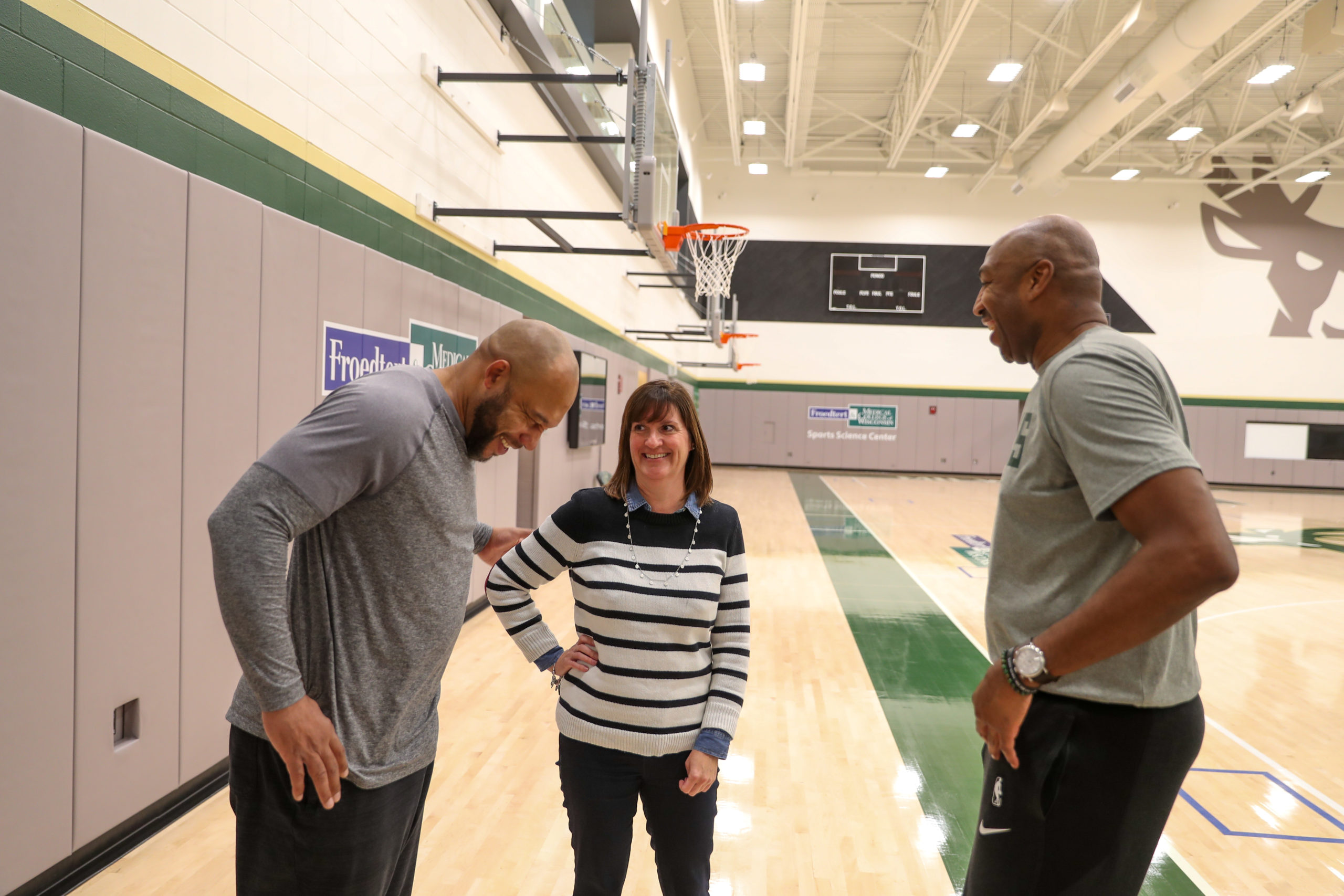As HRE increasingly focuses on the role technology plays in the overall success of the HR function, we’re also rededicating ourselves to highlighting the “human” in human resources.
To that end, we’ll be introducing our readers to high-level HR executives who are making a difference at a high-profile–but not necessarily high-headcount–organization.
We begin with Kelly Kauffman, chief human capital officer of the National Basketball Association’s Milwaukee Bucks franchise. As a lifelong Bucks fan, Kauffman remembers attending games at the old Bradley Center during her undergraduate days at Marquette University. (The team moved into its current home, Fiserv Forum, in August 2018). Kauffman held various HR leadership roles at several manufacturing companies before joining the team, where she honed her skills in areas such as employee relations, talent management, organizational development, compensation and benefits, training, and mergers and acquisitions.
This season, the Bucks are contending for the team’s second-ever NBA championship. The organization-wide headcount has grown from 80 when Kauffman arrived in September 2014 to approximately 300 full-time workers and an HR team of six. The company also has 1,200 part-time workers who staff games and event days at Fiserv Forum. But when she joined the Bucks, Kauffman quickly learned that the team she grew up cheering on had never grown its own HR department.

(Photo credit: Nick Monroe, Milwaukee Bucks)
The following conversation has been lightly edited for content and clarity.
HRE: What were some of the biggest challenges associated with building an HR program from scratch?
Kauffman: Everyone has a notion that NBA teams have it all together. But when I arrived, I was the first employee on the HR team ever in the history of the company. I had to go through and take an overview of what we had and what we were doing. For example, game-night staff [such as ushers, ticket takers and concessionaires] recruited whoever they wanted whenever they wanted, with no applications, no recruitment letters, nothing. It took easily a season and a half to uncover what had to change.
The most exciting part of that was that it gave me the opportunity to learn the ins and outs of the business. I had to dive into every part of the business, so that knowledge now allows me to pivot quickly and move quickly and see results quickly.
HRE: One of the things you discovered during this time is that your ticket-sales team was extremely lacking in diversity. It’s a top-of-mind issue for many HR executives these days, so how are the Bucks addressing diversity and inclusion issues?
Kauffman: The first thing for us is to make sure our staff looks like our fans because we have a very diverse fan base. In the ticket-sales program, one of the things we focused on was to make sure we had more women and people of color on our team. But more than anything, we are having our managers think about diversity and inclusion whenever possible. As of right now, we’re just about under half for women and people of color in terms of representation on the ticket-sales team. We want the best candidates, but we also want people who represent what we are about.
HRE: Are there any similarities between the manufacturing industry and the NBA?
Kauffman: From an HR perspective, managing people is the same for both. Whether they’re the mascot or the team lead on an assembly line, the core issues are often the same. The product may be very different, and it’s definitely challenging to go from the tangible [manufacturing] to the intangible [experiencing a live NBA game], but the goal is the same.
HRE: Do you play basketball?
Kauffman: [Laughs] I played basketball in seventh grade and was horrible, but I have a 14-year-old son who plays. I can pretty consistently beat him in HORSE in the driveway, which he may not admit.
HRE: Do you ever interact with the CHROs from the 29 other NBA franchises?
Kauffman: What’s interesting about that is we’re all competitors on the court, but there are only 30 of these HR jobs in the world. We get together a few times a year and talk through our common issues with one another. We even occasionally adopt different initiatives that another NBA team is doing. For example, the Orlando Magic HR team recently put together a mid-year review chart for employees to fill out that we are using now. It gives great talking points to our staff about what’s working well, as well as what areas employees would like to change.
Over the years, [the NBA’s HR group meetings] have grown leaps and bounds, and now each team tries to present something that will be useful for other teams.
HRE: What’s the best piece of work/HR advice you ever received?
Kauffman: For me, it’s got to be: “The answer is always no if you don’t ask.” That comes from my mom, who always said that you are the best proponent for yourself, so if you don’t put yourself out there to try something different, the answer is always going to be no.
To nominate yourself or another HR leader to be interviewed in Insights from a CHRO, email [email protected].

